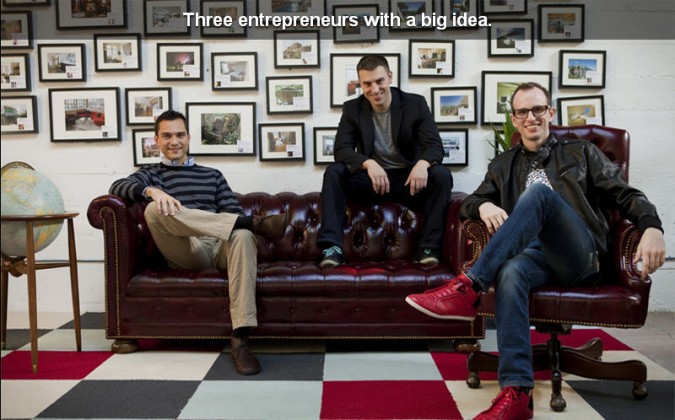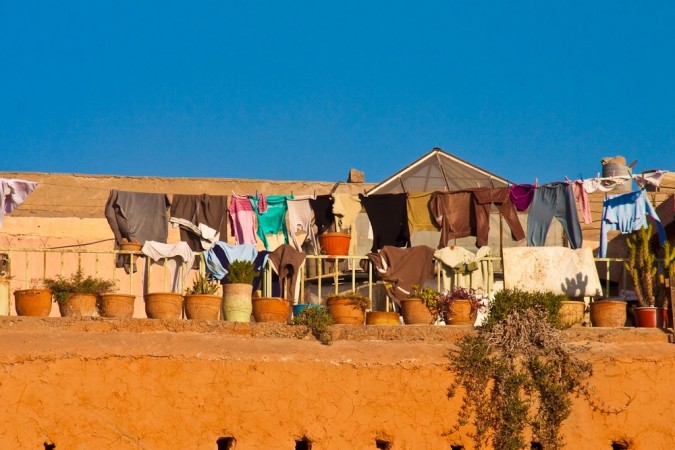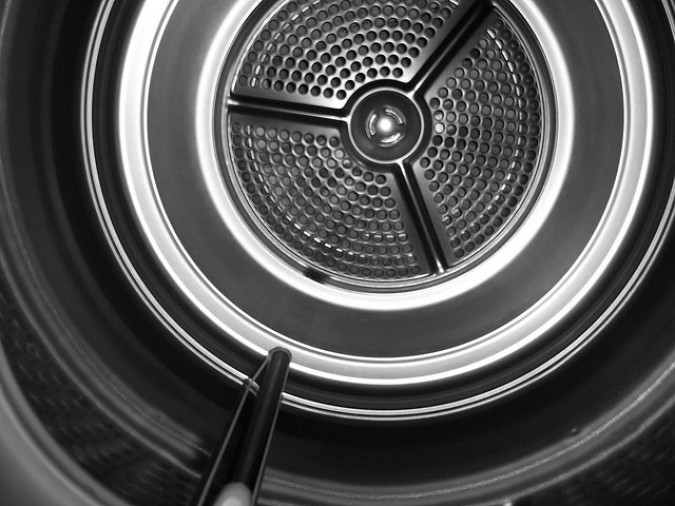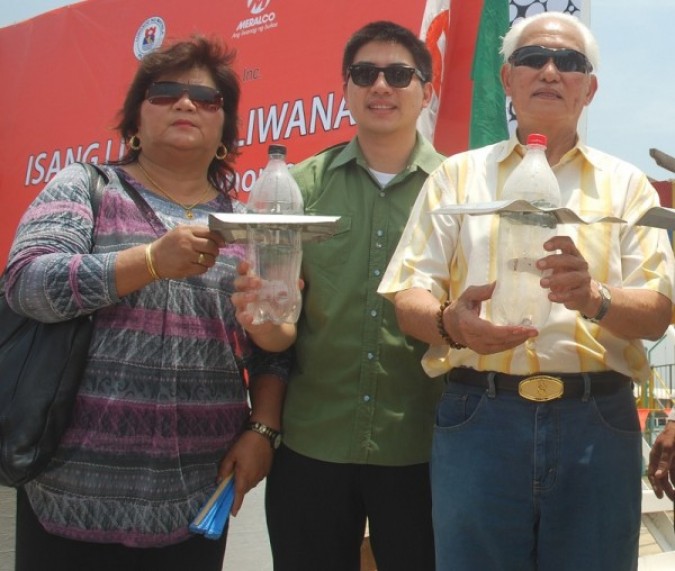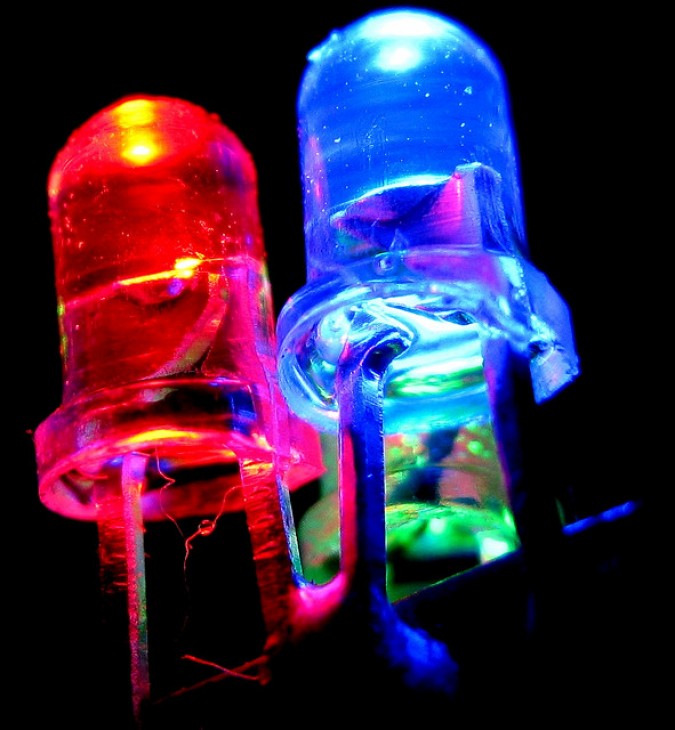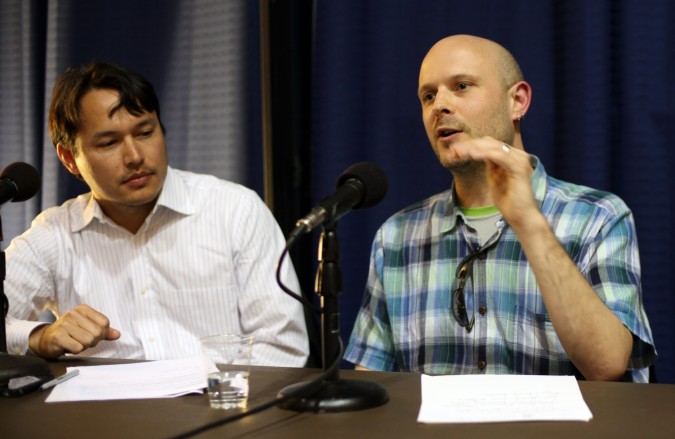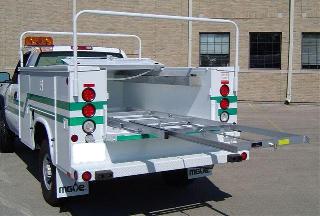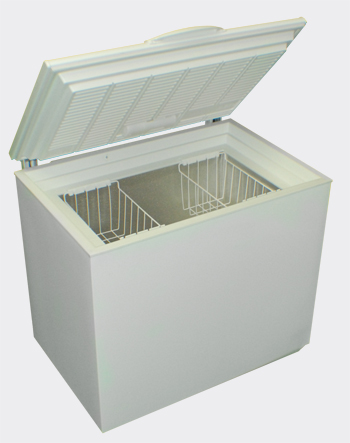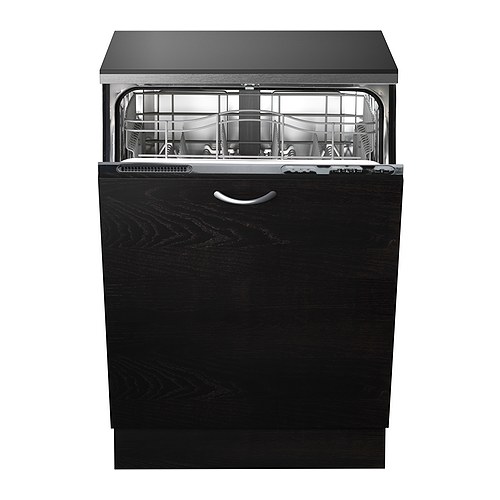Archive for the ‘Ideas’ Category
Airbnb hosting is fun with minimal risk
Airbnb, formerly Air Bed and Breakfast, is in the news this week.
According to news reports like this one on TechCrunch.com, a host’s home was ransacked by a paid guest. Apparently this is the first time this has happened, even though Airbnb says their site has arranged over 2 million nights of stays.
If this is the worst that’s happened in 2 million nights, that sounds like a better record than hotels and motels likely have. I suspect that the rate of guests being actually attacked in a hotel is higher than 1 in 2,000,000, though I have no facts to back up that hunch.
There is controversy about what happened, with Paul Graham, the founder of Y Combinator saying the host may be lying. I don’t know what did or didn’t happen, and I’m not taking sides here.
Here are some more links to stories about the controversy:
The Airbnb Horror Story Continues
On Safety — A Word from Airbnb
Airbnb Responds to User Horror Story
I will share my experience with Airbnb below.
I was an Airbnb host in 2009. I made about USD $800.
I offered the living room in my detached San Francisco house at USD $40.00 per night. I had a lot of takers, and I absolutely loved being a host. It was a highlight of that year. I got to meet so many interesting travelers, including guests from France, Czech Republic, Austria, Japan, Oklahoma and even San Francisco.
I never felt unsafe even though I hosted groups as large as four people.
I increased my feeling of safety by installing an electronic deadbolt. I assigned a new door code for each guest or group of guests, and I deleted the code when they departed. So nobody retained access to my house after their visit.
I also made a copy of the government issued identification documents of each guest, and I locked these copies in a safe and scanned them and emailed them to myself. So even if a guest burned down my house, I would be able to give the authorities copies of the IDs of my guests.
I would guess that the person who allegedly had their apartment ransacked didn’t make a copy of the ID of their guest. I think AirBNB should instruct hosts to do so. After all, hotels and motels in the US are required to ask to see your ID, so guests are trained to not think anything of such a request. I’ve been asked for my passport at all the hotels, motels and youth hostels I’ve stayed at outside of the US, so I suspect there is a law requiring such requests almost worldwide.
I suspect that people are less likely to ransack a place after they’ve had their ID copied by the host.
One of the most interesting guests I had in 2009 was a guy who arrived by motorcycle from his San Francisco apartment. He stayed the night but didn’t shower in the morning. He went home for that, I guess. Why did he stay here, alone?
Airbnb was considering hiring him, and part of the hiring process required that applicants try the service. He was very talkative, and since we were both in the Internet field, we had a lot to talk about. I recall Airbnb had fewer than 10 employees at the time. I could tell Airbnb was a great company on its way up, up, up. What a business model — I recall they collect 20% of the rental price for playing matchmaker and escrow agent.
According to recent news reports, Airbnb recently closed a USD $112 million dollar venture capital investment at a valuation of USD $1,300,000,000 (sic). If that guy that stayed with me for a night got hired, he’s likely now worth millions on paper. I’m happy for him.
Here are some links to articles about Airbnb:
AirBNB Could Have More Rooms than Hilton by 2010
My Ultimate Bachelor Pad on AirBNB
I know two people who used Airbnb to book a multinight stay in an apartment in Paris, France. They got the entire place to themselves. I saw pictures and the home was charming and simply lovely. There was no elevator and there were six flights of spiral stairs to climb, but I bet those stairs made the place particularly memorable for the travelers. I am not criticizing Airbnb or Paris for the stairs. I really believe that charming old buildings help their occupants form strong memories. It was probably a pain to lug suitcases up six flights of stairs. But as those memories fade, I believe the fond memories of the apartment will remain, and that even 50 years from now those travelers will fondly remember their cute Paris apartment, but they won’t remember any of the corporate hotels they stayed at back then, no matter how costly or opulent.
I was inspired to become an Airbnb host by my brother Andrew Warnock. On his honeymoon with his wife, they booked an apartment in Prague, Czech Republic by visiting a booking booth in the Prague central train station. He said the apartment was really great, and that he would repeat the experience.
Now, back to the Airbnb property damage controversy. AirBNB is worth more than a billion dollars now. They are famous. They are targets, and they’ll need to deal with that, sadly.
I can easily see a situation where hosts stage a trashing of their home, hoping to get new housing, courtesy of a rich and well liked startup. I would think that Airbnb will ultimately decide to require hosts to email them the IDs of guests on the day of checkin. This will allow Airbnb to be a central repository of the identification documents, and will help greatly if a host is ever hurt such that they can’t point the authorities to the location of the IDs. Airbnb already stores the credit card details of its guests, so storing their IDs should not raise the eyebrows of well intentioned guests. However, it should greatly alarm poorly intentioned guests.
With the widespread adoption of smart phones with cameras, hosts can photograph and send photos by MMS or email. If it’s decided such systems are not secure enough, Airbnb could write a set of phone apps that would use the camera to take the picture. Then, the apps could encrypt the picture and directly connect to servers at Airbnb. In this way, the sensitive ID documents could be securely transmitted to Airbnb while bypassing the Internet’s open email infrastructure.
Again, I don’t know what happened in the current ugly situation in the news. If the host’s home was ruined by a guest, then perhaps AirBNB should pay the deductable for any insurance the host carries. I do think that AirBNB shouldn’t be fully on the hook for all the damages, because that’s what renters’ or homeowners’ insurance is for. What if a guest accidentally burns down an apartment building by careless use of candles or the stove? Should AirBNB have to spend millions to rebuild an apartment building? I don’t think that’s fair or just. The terms of service should require that hosts carry suitable insurance as a condition of being a host.
I’m sure all these issues will get worked out. I met one of the founders of Airbnb in 2009 when he came to my house with his camera and tripod to take pictures for my profile. When he learned I already had pretty good pictures on my profile, he didn’t take any and we used his time at my house to talk about Airbnb. I had a good feeling about him, and I suspect if his other cofounders are similar, that the company will come though this situation stronger. The founders of Airbnb are Nathan Blecharczyk, Brian Chesky and Joe Gebbia. I can’t remember which founder came by my house.
I have a website for my house where you can see the pictures I used when I was an AirBNB host.
I continue to be a huge fan of Airbnb and I hope to again be a host. The reason I am not a host right now is I have four young female roommates sharing my house as tenants, and it just doesn’t seem nice to ask them if I can allow random strangers to share their bathroom, as much as I think it’s safe.
Disclosure: I am friends with Sam Angus, a partner at law firm Fenwick & West LLP. Angus represents Airbnb. I haven’t had any contact with Angus about this controversy.
Heat recovering clothes dryer to heat water
July 24, 2011 when I was falling asleep I thought of an idea I love. I plan to try this idea in my bus conversion.
Here’s the idea:
Place a car radiator in the exhaust flow of a clothes dryer. Pump water or another heat exchange liquid through tubing that connects the radiator to a heat storage tank. The fluid in that tank will warm, and that warm water can be piped through hydronic floor heating piping to heat the home.
This heat recovery could be meaningful, especially in households where the dryer gets used a lot.
Alternatively or in addition, the recovered clothes dryer heat could heat the domestic hot water supply, and that water could be used for the clothes washer. In effect the heat from the dryer could make the washer more energy efficient.
Alternatively or in addition, the recovered clothes dryer heat could be used to heat an aquaponics fish tank, which generally makes the fish eat more and gain weight faster. I understand that catfish grow fastest when their water temperature is 84 degrees fahrenheit. It takes a lot of energy to warm hundreds of gallons of water, so recycling heat from a dryer is a good idea.
Car radiators are cheap. I discovered this when buying the parts to build my sound proof engine box for my bus conversion.
My idea is so simple and inexpensive. It’s applicable to gas and electric dryers, and it makes sense for nearly every home in every country I can think of that has a clothes dryer. Why hasn’t such a system already been implemented?
Others have conceived of capturing waste heat from clothes dryers. Inventor Richard A. Brunner patented in the United States a system that from my quick read of the full text of the patent uses a heat exchanger to warm house air with moist air from the dryer vent. I didn’t see anything about heating water or using the hot water to heat the house or the water for a clothes washer, as I have described.
I suspect all the major clothes dryer companies have also considered heat recovery systems. The idea is not far fetched. I believe many industrial factories capture ‘waste’ heat from systems all the time for use elsewhere.
As I understand it, home heating forced air furnaces of high efficiency already recover heat from the first combustion process in a so-called second stage. I have been told these super efficient furnaces are trouble prone, but that they do work. I was advised not to buy one due to their complexity. But these dual stage furnaces apparently work by burning the exhaust, not just capturing heat from it. My dryer heat recovery system would be much simpler and cheaper to construct.
I have read about devices to capture heat from waste drain water, which often contains heated water. I suspect the amount of heat those devices recover is relatively small compared to the available heat that could be cost effectively recovered from a clothes dryer.
When I converted my Kenmore natural gas clothes dryer to propane so I could install it in my bus conversion, I temporarily operated the dryer with the front cover removed. I got to see the flame size, and I would say it’s similar to the size of flame that would be produced by running four stovetop cooking burners at once.
Yes, a lot of the heat is consumed evaporating water, but when I put my hand over the outside vent when my dryer is running, it seems like at least as much heat as a 1,500 watt space heater produces.
I suspect about 2/3rds of that heat could be captured in a hot water tank. A space heater produces about 5,000 btus of heat per hour, so 2/3rds of 5,000 is 3,333 btus. It takes about 1,000 watts of electricity worth say USD $.20 to run 2/3rds of a 1,500 watt space heater. So the captured heat from running a dryer by electricity for an hour is worth about USD $.20.
If the dryer is run for five loads a week, a dollar a week in energy is saved, or $52 a year. A dryer might last for ten years, so $520 worth of energy would be saved over the life of the dryer, or enough money to pay for the entire appliance.
But energy is getting more costly, so over ten years the savings might be 50% higher.
Every little bit helps.
Gas water heaters and furnaces should also have heat exchangers installed in their exhaust stacks. If a house is built with the hydronic piping for these heat exchangers in place, the cost to add these recovery systems should be affordable. However, it would be much better to eliminate the water heater and furnace in most homes, in favor of mandatory solar water heating for water and the air.
I think it is one of mankind’s dumbest moves to ignore the sun for most water and home heating worldwide, in favor of burning fossil fuels which really should be saved for fueling aircraft and spacecraft and making advanced plastics.
Why are we not burning oil at a rate such that it will last for 1,000 years? Or 10,000 years? Some say we’ve used up half the oil on the planet already, in what, 150 years? That’s a snap of the fingers. What will we do in three snaps? Go back to sailing ships? Yes, by then we might figure out cold fusion or oil from algae such that it really substitutes for oil. But what if we don’t?
While I’m carrying on here, I should say that clothes dryers themselves are rather ridiculous when air drying clothes makes them last longer and is free. Garages should have enough clothes lines to dry multiple dryer loads of laundry, and garages should have fans that exhaust to the outside so that drying times can be reduced substantially. Outdoor clothes lines should be allowed everywhere, by law, in the same way that television satellite dishes are allowed everywhere in the United States by law. As I understand it, no contract can take away the right to install your own satellite dish. The exception is if you have free access to a community satellite dish.
Some housing complexes have legally enforceable covenants that forbid outdoor clothes lines, and your house can be foreclosed on and sold if you violate these contractual regulations. Such provisions should be against public policy and automatically be void and unenforceable.
Sadly, wet clothes don’t have the powerful lobby that the satellite television reception industry pays a lot of money to employ.
Smoke detectors should send activation warnings via text messages via Wi-Fi
Technology to connect to the Internet via Wi-Fi networks is small and inexpensive. Mobile phones and even camera memory cards accomplish this task.
I have an idea of how to use this technology to improve safety.
Combine a smoke/carbon monoxide detector with Wi-Fi circuitry so that when the detector activates text messages can be sent to people and entities that should be alerted.
There are already ‘Wi-Fi smoke detectors’ for sale, as a quick search will reveal. But these detectors are not for detecting smoke, but for covert video recording of a room. These products demonstrate that it’s easy to put a Wi-Fi transmitter into a smoke detector case.
The best of all worlds would be to combine an actual smoke/carbon monoxide detector with a video camera so that when the detector activates that a text message can be sent that includes a link so the message recipient can sign in to a webpage to observe the room the detector is located in. In this way, false alarms can potentially be identified from afar.
Current video fake smoke detectors cost a lot, but that’s because they are made in tiny volume. I bet a combination smoke, carbon monoxide, video Wi-Fi detector could sell for under USD $100 if they were required by building codes.
Finally, I think it’s time to add another feature to smoke/carbon monoxide detectors. I think detectors should also sense unburned gas such as natural gas and propane. For reasons I can’t understand, modern gas stoves don’t stop the flow of gas if there is no flame, so it’s possible to fill the house with gas without warning, other than the bad smell. Smell based warnings do no good for sleeping occupants. Gas detectors typically need more than a 9 volt battery to operate, so gas detectors usually are plugged into AC power. I think that’s fine, provided there is a battery backup to carry through power outages.
I would certainly pay USD $200 per detector for a gas/smoke/carbon monoxide/Wi-Fi/Video detector.
Would you?
Litre of Light – nearly free solar lights made with plastic water bottles and bleach
Sometimes I learn of an idea that shocks me with its brilliance.
Today I will describe such an idea. It’s called the Litre of Light.
Here’s the summary from the project’s website, Isang Litrong Liwanag, which translates to ‘A litre of light’:
“Isang Litrong Liwanag (A Liter of Light), is a sustainable lighting project which aims to bring the eco-friendly Solar Bottle Bulb to disprivileged communities nationwide. Designed and developed by students from the Massachusetts Institute of Technology (MIT), the Solar Bottle Bulb is based on the principles of Appropriate Technologies – a concept that provides simple and easily replicable technologies that address basic needs in developing communities.”
A Solar Bottle Bulb is a clear water or soda bottle filled with tap water and a little bleach. This bottle in embedded into the roofs of houses, with part of the bottle outside, and part of it inside. There is sealant around the hole to keep the roof weather proof. When the sun hits the outside part of the bottle, a lot of light reaches the inside part of the bottle. The water inside the bottle makes the light omnidirectional, mimiking an electric light bulb. The bleach keeps the water clear for years. Without the bleach, the water would quickly turn green with algae. Without the water, there would be a bright spot on the floor, surrounded by relative darkness.
Each Solar Bottle Bulb produces about as much light as a 60 watt incandescent light bulb, according to the video transcript linked to in this sentence.
I wish I could take my Canon 5D Mark II into some houses with these bulbs installed and get some really high quality still photographs and video, to help spread the word about this really bright idea. Light bulb entrepreneur and proponent Thomas Edison would be pleased.
The beauty of the Solar Bottle Bulb is that it works and it’s really affordable, at about P150 to P200 (USD $4.66 at today’s exchange rate) per home, installed, according to Alfredo Lim, the mayor of Manilla in the Philippines, pictured above on the right. That 150 to 200 peso cost is per home, not per bulb.
I am going to install these in any eco home I build down the road. I have a big collection of glass bottles to choose from. I’m not sure if glass is as suitable as plastic, but I would prefer to use glass if it can be made to work reliably.
Apple patent pending for technology to block live event video capture
According to this Fox News story New Apple Technology Stops iPhones From Filming Live Events, Apple has filed a patent on technology to make it impossible to capture live video at protected live events.
The Fox News article explains the technology in a way that doesn’t make sense to me. I think what the article should have said is:
“A light emitting (LED) diode on stage at an event can blink in such a way as to alert the iPhone camera that recording is not allowed. The LED can emit invisible infrared radiation, so the audience won’t notice any difference in the event with their eyes.”
I am very suspicious of the Fox News technology explanation that says the iPhone will emit radiation that infrared sensors on stage will capture and react to. I think that’s implausible, because the iPhone would have to have a strong infrared LED in it, and over time that would diminish battery life. Also, it would mean the system would not work at long distances, such as stadium shows where the videographer might be a city block away. I don’t think LED remotes work over that distance. But a powerful infrared LED on stage could signal all the iPhones in the venue, and power usage wouldn’t be an issue because that LED could be plugged into AC power.
However it works, I applaud Apple for thinking their idea up. It’s a good and clever idea. I wish I had thought of it.
I think Apple could and should take this idea a few logical steps forward. Perhaps they have developed these plans but have not yet publicized them. I will detail my plans here, and if Apple should want to use them and they haven’t thought of them already, they can credit me and send me a new iPhone for life, as compensation.
1. Apple should not disable the capture of video. Instead it should offer to sell the user the ability to capture that event for a price, charged right there using Apple’s ‘in app’ purchase mechanism. This fee can be split with the venue and performer(s), using the same 70%/30% split people hate and love, respectively. The artists hate it and Apple loves it, I suspect. The video recorded should contain the serial number of the phone embedded into the video image in a way that is not visible to the eye but can be easily read by software. Then, if the video is posted online publicly, that user can be tracked down and charged more, perhaps even a lot more, to discourage them from doing it again. To make the serial number unremovable, it could float around the image from frame to frame, and change size and font. To take it out would take so much work as to be impractical.
2. Apple should apply this feature to all controlled access events, not just live events. Thus, this technology could be used in movie theatres to make it impossible to bootleg a movie being projected on screen. The phone could display a message offering the user the chance to buy the DVD and have it delivered the day it goes on sale, for example. It could offer the eager potential bootlegger the opportunity to ‘Like’ the movie on Facebook, building on the fan’s just demonstrated enthusiasm for the movie. Apple should resist any temptation to use the video attempt to turn the person over to the police, which it could do by having that phone call the police and use a recorded message to alert them that a Federal crime is in progress. Convicting fans is not good policy. Selling movies and related merchandise to avid fans is good policy.
3. Building on the last point, this technology could be used to prohibit video recording in airports, on nude beaches (with really bright LEDs on posts?), in bathrooms, locker rooms and even in private homes. If Apple’s technology could get incorporated into all video cameras, celebrities might worry a little less about being surreptitiously recorded in a compromising position.
While writing this post, it occurred to me that all audio recorders could incorporate similar technology, with similar benefits, as follows:
The audio feed for an event could contain an inaudible signal that the recorder could decode and act upon. The device could offer to permit recording for a fee, and the serial number of the device could be embedded inaudibly into the stream, to guard against public distribution. Or, for simpler devices like dictation recorders, the device could simply refuse to record.
This is generally how the old MacroVision anti piracy technology for VHS video tapes worked. A signal on the original didn’t disturb the picture when played back. But if you tried to record the signal to another VCR, that VCR would react to the signal and degrade the copy so much it was valueless.
Introducing FaceSeat to remotely attend weddings and funerals
Since Apple iPad tablet computers have forward and rear facing video cameras, and are set up for slick and easy video conferencing, I have a proposal:
Make iPads available for check out in hospitals and nursing homes, so that patients can receive ‘hospital visits’ from their friends and family more frequently.
I bet that if a scientific study were conducted that patients would get well sooner and be happier if they could video chat with their friends and family for free, even if they didn’t own or know how to operated a computer. I suspect the video chatting on the iPad is so easy to use that nurses and doctors could be trained to be trainers in mere minutes.
I suspect there are already robust WiFi networks in care facilities, so the networking is already in place.
While we’re at it, install permanent video cameras at all funeral homes so people can attend even if too far away to travel.
For that matter, install video cameras at churches and other places where weddings take place, so more people can attend weddings.
For an extra dose of ‘being there’ somebody could create a holder for an iPad that would look sort of like a person from the sholders up. Where the face would be, place the iPad. This iPad holder could be clipped to the back of a chair or bench.
This way a church, wedding venue or funeral home might have 10 ‘remote seats’ available, where one iPad equals one seat. When someone is occupying a seat at home, their face is shown full screen on the remote iPad. In this way, the physically present attendees can see the faces of the remote guests, and the relatives will be comforted that more friends and family could attend.
Since all these iPads cost money, I suppose it would be OK for wedding and funeral venues to charge extra for these virtual seats. But I would say just give them away at first, to get people hooked on the concept. It’s such a far out idea I am doubtful people would pay until they had seen it done at another event.
I read once that when the grocery shopping cart was invented and placed in stores that nobody touched them. The proprietor had to hire pretend shoppers to push them around as if they were really shopping. That educated actual shoppers, who began to use the carts themselves for real. I think something similar might be required to get this idea off the ground. It might even be necessary to hire fake guests who do not know the wedding party or the deceased, to virtually attend the wedding or funeral, cry and be present.
I’ve read that in Japan there are businesses that rent actors to attend weddings in person to give the impression the bride and groom have more friends than they really do. So there is a precedent for fakery like this.
I think the idea of virtually attending important life events is a good one. Especially going forward with jet fuel being so expensive and security standards getting stricter. It just isn’t a great idea to fly all over the planet for all these events, and such travel I predict will one day become politically incorrect.
There are so many ways to make my idea more like being there. The iPads could be mounted on motorized tripod mounts the remote user could adjust, so people could look to their sides and say hello to real people. The iPad has a camera on the back already, so people could see who was sitting behind them. Maybe two iPads could be mounted back to back so that people sitting in the back could see who was sitting up front in the virtual seats.
Lots of people miss lots of important events. My idea is much more social than simply installing some anonymous cameras that might be security cameras as far as the attendees are aware. With my idea, people present physically can interact with people present virtually.
I dub my idea FaceSeat.
Of course, this concept is applicable to zillions of events beyond weddings and funerals, but at first I would focus on these big markets — a lot of people marry and die in the world.
With the provocative name FaceSeat I could get sued by Apple and FaceBook at once. Think of the stunning PR that would result – instant mind share. If Oprah [Winfrey] still had a popular daytime television show, I’d be on it within days of the lawsuits being filed.
PS — This is just a wacky idea I’m writing on my blog! I am not jumping into to the videoconferencing industry. If someone has already thought of and published my idea, I’d like to know about it so I can update this post.
Social Capital: The Intersection of Money and Meaning – at Commonwealth Club of California
Last evening I attended a talk entitled Social Capital: The Intersection of Money and Meaning at The Commonwealth Club of California.
The speakers were:
Patrick Donohue — co-founder and CEO of The Hoop Fund
David Hodgson — Co-founder of Connective
Kate Sofis — Executive Director of SF Made
Penelope Douglas — President of the Board of SOCAP
I got to meet Kate Sofis, the Executive Director of SF Made. You may recall that I wrote about SF Made in February, 2011 and in that post wrote that I hoped to meet Sofis. I didn’t at the time know that I would meet her just over a month later.
Sofis reminded me about Modern Cabana, a company I originally learned about from my friend Kevin Casey of New Avenue, Inc. Sofis told the audience that Modern Cabana consists of just 2 people, the co-founders. This was one of the most inspiring facts I’ve learned since joining the Commonwealth Club less than 6 months ago.
Modern Cabana offers an appealing product from an attractive website. The company appears to be much bigger than it is. They are based in San Francisco, and make their products in San Francisco, according to Sofis. This is just outstanding news for me, since I am thinking about making a business of selling off-grid capable green homes, and I would like to do this in San Francisco, since I don’t plan to move and I don’t want to commute to a different city to work, as I think commuting long distances to work is itself unhealthy, unwise and not green.
Here’s a clip from the talk. The first speaker shown is Penelope Douglas. The second speaker is Kate Sofis of SF Made. I had nice conversations with all of the panelists after the formal program concluded.
Of course, the panel talked about much more than Modern Cabanas. The primary point I believe the speakers were making is that good can be done by investing in and creating double bottom line businesses. This subject is close to my heart, thanks to the education provided to me by my friends Priya Haji and Siddharth Sanghvi.
Why not turn off electricity when smoke detector activates on a bus conversion?
I’m in the middle of converting an RTS bus to a motorhome. I read Bus Conversions Magazine to learn construction techniques. The discussion forum hosted by Bus Conversions Magazine is outstanding, and I visit this forum daily.
Sadly, some bus conversions burn to the ground.
What a tragic event that would be if it happened to my bus conversion.
These things really represent a lot of work, and getting a check from the insurance company would still mean you’d have to duplicate a lot of work to make a new one. Yes, you could buy an already finished conversion, but there won’t be another conversion anywhere in the world like mine when I’m done with it, it’s going to be that unusual.
So I want to make it very unlikely my bus will ever burn to the ground. I’ve already talked about putting the generator on the roof in a previous post. That should help a lot since many bus fires start in the generator compartment, typically in a storage bay, and burn up from there. If any fire started on the roof, it would be hard for it to burn down, especially since the box I will put the engine in will be made of metal and lined with cement board and rock wool type insulation that can’t burn. I will also put auto closing trap doors on the air inlet and exhaust, so that if there’s a fire, oxygen to the box will be shut off in seconds, which should snuff out any fire almost immediately.
Another big source of bus conversion fires are electrical fires. To limit the chance of an electrical fire, I am not going to install many wires in the ceiling and exterior walls, which will be insulated with spray foam. Spray foam is highly flamable, and when it burns, it makes toxic gas that can kill you very quickly. So I will keep most of the wires I add inside metal conduit elsewhere that’s not close to spray foam.
The manufacturer of my RTS, TMC Corporation, ran several large bundles of wire in the ceiling, and these are required for the vehicle to run at all. There are perhaps 100 conductors, and it would be risky to try to make them longer so I could run them somewhere else, so I will leave them in place. However, I am looking into encapsulating them in a fire stop product.
The above precautions are straight forward. What I’m going to write about today is less straight forward, and I would like comments as to whether what I’ve dreamt up would be a good idea to implement.
I’m considering installing smoke detectors that include a relay to control unrelated circuits. If the alarm trips, a totally separate electrical circuit can be closed or opened, depending on how you wire the relay.
What I am thinking about doing is using the smoke detector to control a set of motorized linear actuators that would be installed next to and attached to the actuation paddle of each of the master circuit breakers and master battery disconect switches on board. When the actuator is engergized, and motor inside it turns some gears which cause a plunger to move in a straight line for x number of inches. When the polarity of the energizing power is reversed, the actuator plunger moves in reverse. In this way, formerly manually operated switches and circuit breakers are now electrically controllable.
My RTS before the conversion was started had 2 master battery disconnect switches, in the battery compartment. These switches take some effort to push, thus my selection of an actuator that can push or pull 100 pounds. I would not allow the actuators to operate these main vehicle power switches when the bus conversion engine is running, since it could be dangerous to shut down the engine while underway, even if there’s a fire on board somewhere.
My RTS after conversion will additionally have 3 master circuit breakers, as follows:
- AC shore power master breaker
- 24 volt house battery bank master breaker
- 12 volt house battery bank master breaker
If all 5 breakers were shut off in the event of fire, it would seem that an electrical fire might not get as far as if there were power flowing. What I don’t know though is if an electrical fire has caused enough smoke to trigger a smoke alarm, does that mean that even if the power is switched off that it will accelerate or continue burning?
Of course, it could be traumatic if you’re cooking dinner at night, set off a smoke alarm and are plummeted into darkness. But I almost always have my phone with me, and that doubles as a flashlight, so I’m not that worried about that. In addition, the System Sensor manufacturer of detectors I linked to above offers a model that has two degrees of alarm severity — smoke and heat. A local alarm is triggered with smoke alone and a general alarm is triggered when the built in heat sensor is activated. This might be the model to install in the kitchen/living room compartment of my 4 compartment bus conversion. Many of the System Sensor detectors run on 12 or 24 volts direct current, perfect for a bus conversion, and can be networked together so they all make noise when one activates.
Another downside is a small fire might be safely extinguished with a garden hose, which will need the pump active to pump water. But I would make it easy to reverse direction of the linear actuators so I could turn the power back on quickly, and I could have a dedicated circuit for the water pump that wouldn’t be shut off in the event of fire.
There probably is a good reason not to implement this idea, because if it was such a good idea, why isn’t it implemented widely in buildings? Linear actuators are cheap and plentiful, as are networked smoke detectors that can switch external circuits. If this idea were required by code, the price of these items would plummet, like what must have happened with ground fault circuit interrupters, which are so inexpensive I can hardly trust them, given how critical it is that they work for decades without attention.
However, there’s a chance this idea hasn’t been seriously considered and tested. I would love to start a debate in the comments here or on the Bus Conversions Magazine discussion forum, where my member name is ‘Kevin Warnock.’
PS – I want to express my condolences to Mike Sullivan, the CEO and President of Bus Conversions Magazine, who lost his Mother Dorothy Sullivan today.
Slide out solar panels for my bus conversion
For a while now I’ve been thinking about putting solar hot water and solar photovoltaic panels on slide out mechanisms on the roof of my RTS bus conversion.
Today I found a supplier that would make this plan easy to implement.
I imagine that when camped I could push a button and solar panels could extend from the street and curb side of the conversion.
There would be the primary panels about a foot over the top of the roof, flush with the top of the roof deck shroud I’m planning. The extra panels would be under the primary set, and these are the panels that would slide out.
At first I thought I would use stainless steel heavy duty drawer slides for this project, but they are very costly and would require that I build a frame to use them with. Then, on YouTube, I found the solution: Glide N Grab
This company makes slide out platforms for pickup trucks, work vehicles and RVs. The platforms are available made from aluminum, which I like for weight savings and corrosion resistance. The aluminum slides are available in capacities up to 1,000 pounds. Photovoltaic panels weigh about 50 pounds, and I probably could fit two at once on one of these slide out platforms. That would leave unused capacity of 900 pounds to battle the forces of the wind, which could be ferocious. The Glide and Grab company even sells a motorized extend and retract option, so I wouldn’t have to build something special.
These slides are quite affordable compared to drawer slides, and I think they’re much more suited to the task. I probably won’t implement this plan for years, as I still have so much work to do, and I’m busy with work and my urban homestead. But I wanted to write about this today as I am really excited about this idea. For bus converters where money is of little object, these slides are cheap, and if you covered the roof of a $2,000,000 Prevost with panels and slide out panels on the street and curb side, that’s probably enough power to run an air conditioner to keep 1/4 or a 1/3rd of the vehicle cool without running a generator. This would be a green selling point, and it would certainly be a conversation starter in the high end resorts where the owners of these vehicles vacation. These 45 foot monsters could be segmented with doors or curtains so the entire vehicle doesn’t need to be cooled at once.
If I build shipping container houses, these slides make sense, since a key goal is to not need grid electricity. For extreme climates, the area on the roof of a container may not be large enough to generate all the energy needed. With these Glide N Grab slides, one can at least triple the solar capture area. I suspect that the slide area does not count as ‘projected roof area’ when building codes are applied, since the panels can be retracted each day when the sun goes down or during severe winds. Using slides on the roof of a shipping container house would also allow more of the roof of the container itself to be used for food production, increasing the potential for self sufficiency.
This idea is certainly less adventuresome than the idea of making entire rooms slide out of an RV or bus conversion, which must have seemed crazy when first proposed. Room slides caught on, and even inexpensive RVs and travel trailers now offer them.
I see no reason why solar hot water heating panels can’t be placed on these Glide N Grab slides, though perhaps the heavier duty steel slides would have to be used, and special water tubing would have to be used that is both flexible and resistant to ultraviolet radiation.
If you implement this sliding solar panel plan before I do, please send me some pictures.
I suspect someone has already thought of this idea and has implemented it. I couldn’t find any references after a brief search online. If you know of a writeup that predates this one, please add a comment to this post. Thank you!
Make refrigeration super efficient worldwide by switching to top loading models
Did you know that you can convert a common chest freezer into an exceptionally energy efficient chest refrigerator? The electricity savings are so great that I think the entire world should make it a top priority to legislate all new refrigerators must be top loading. Why has the world standardized on a system where the cold air falls to the ground every time the door is opened?
Something tells me that if all the world’s refrigerators were top loading it would save more power than all the photovoltaic solar panels ever manufactured. Since chest freezers are cheap, there’s no economic reason not to do this. A chest refrigerator only costs $5 a year in grid electricity to operate.
Yes, kitchens would have to be redesigned to accomodate top loading refrigerators, but the collective power savings probably amount to dozens of full size nuclear power plants.
The appliance industry has been pushing in counter drawer refrigerators at the high end for years now. What I suggest is that chest refrigerators be designed to look like kitchen base cabinets from the front, and that the top be surfaced in the same material used for the kitchen cabinet countertop. This would mean the refrigerator would be accessed by flipping up the countertop, which would be perfectly counterbalanced with a weight on a rope behind the refrigerator, so that the contents could be accessed with just one finger. I’m sure the appliance industry could figure out how to make a combined chest refrigerator/freezer, and each compartment could have its own section of hinged countertop. Note that even granite counter tops can still be used since the counterweight could be made of cement in a flat plate shape. It might be even more efficient to put three or four hinged lids on a horizontal refrigerator/freezer. While the world waits for the appliance makers to construct a horizontal refrigerator/freezer, we can just install separate refrigerators and freezers, side by side, just like we do today with laundry washers and dryers.
To make the contents easy to access, there could be lift out racks, perhaps even motorized for high end units. Yes, there will be challenges to get people used to this kind of food storage, but this technology has been here for decades and the savings are so great that I believe this is among the lowest hanging fruit for efficiency savings in home energy usage. I am nearly certain switching a home to horizontal refrigeration would save more than switching all the incadescent bulbs to flourescent.
Another big benefit is I believe food lasts longer if not subjected to constant temperature fluctuations that result from the vertical refrigerator door being opened throughout the day. Since a vast amount of food is thrown out due to spoilage, switching to horizontal refrigeration might well save food and reduce hunger worldwide.
Yes, I haven’t run the numbers to support these bold claims, but I have a hunch I’m entirely correct. Anyone care to run the numbers and post them in the comments?
I didn’t think up horizontal refrigeration, and I’m not sure who did, but here’s a thoughtful PDF describing the process, written by Dr. Tom Chalko, MSc, PhD.
Chalko maintains a fascinating website about his advanced energy self-sufficient home in Australia. Dr. Chalko inspired me to incorporate a horizontal solar powered 24 volt refrigerator in the RTS bus conversion I am building.
While it’s easy to convert a common chest freezer from Sears or Home Depot into a chest refrigerator, some people want to just buy a finished product. Thankfully, there are already commercially available low power chest refrigerators for sale, including these models by SunDanzer. The prices start at $699 and top out at $1,249 , which are high compared to chest freezers from big retailers, but not out of the question considering that some people spend thousands on wasteful vertical refrigerator/freezers today. Even at their current prices, a SunDanzer chest refrigerator is a bargain since you’ll save dozens of dollars per year in electricity costs. SunDanzer is a tiny niche appliance maker. If Kenmore or General Electric were to start making energy efficient chest refrigerators, I suspect their prices would be lower than their chest freezers today, as people need more refrigerator space than freezer space, so more chest refrigerators could be sold than chest freezers.
What’s really needed to make all the above work is that top loading refrigerators must be made sexy and hot, like drawer refrigerators and freezers are today. If you’ve seen the Ikea dishwasher that can be customized with any of the Ikea kitchen cabinet styles, you can envision how attractively top loading refrigerators and freezers could be installed into kitchens. A kitchen would not even appear to contain a refrigerator if installed with matching cabinet facing. If you see a cabinet clad Ikea dishwasher, you can’t tell it’s a dishwasher until you look very closely. Ikea gets a premium price for this dishwasher. I would hope that manufacturers would not overprice their horizontal refrigerators, to speed adoption, but even if they do, that might help get this plan moving, as it will help persuade people this is the next big kitchen innovation they really, really want. Big change happens when people really want it, not because it’s good for the planet.


